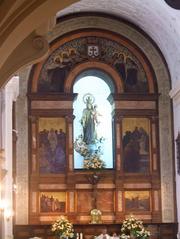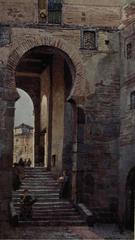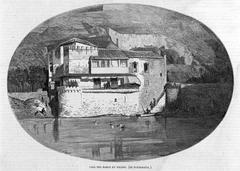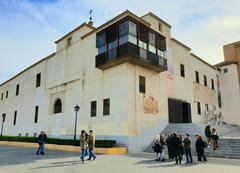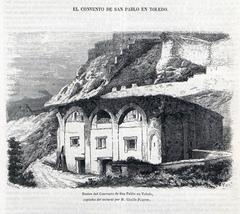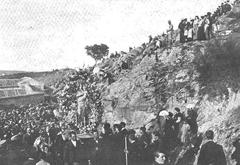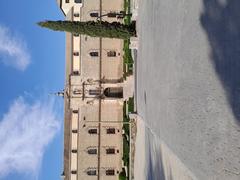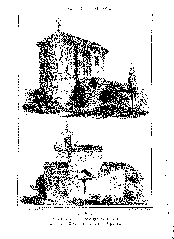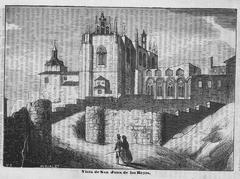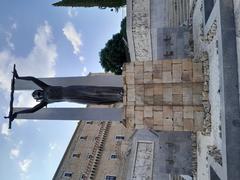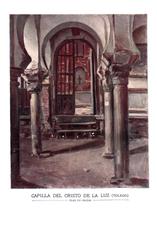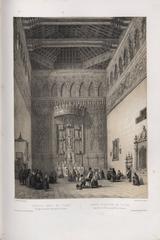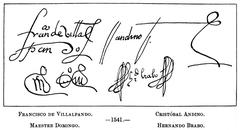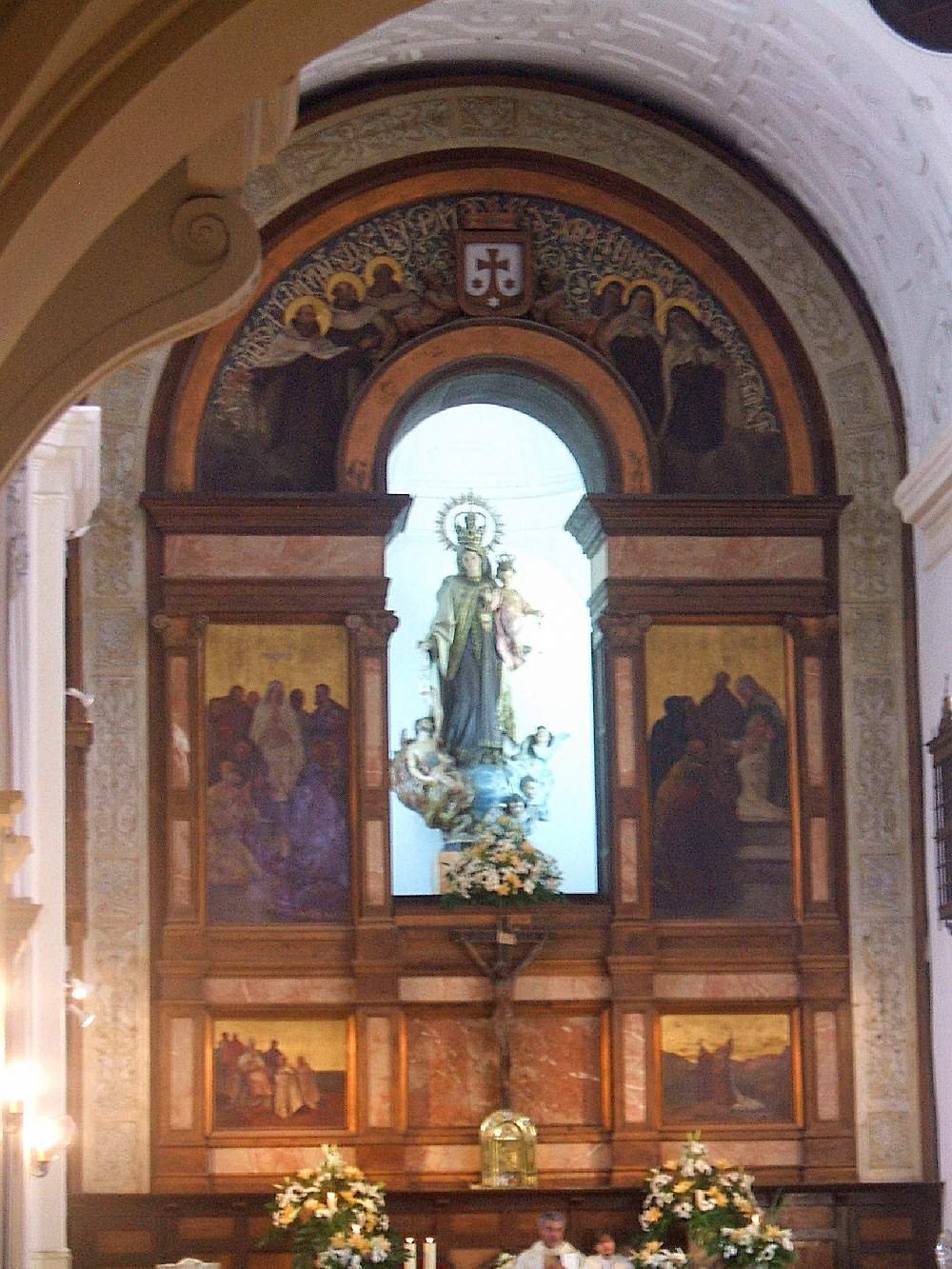
Comprehensive Guide to Visiting Plaza de Carmelitas Descalzos, Toledo, Spain
Date: 01/08/2024
Introduction
Plaza de Carmelitas Descalzos, located in the historic heart of Toledo, Spain, is an exceptional destination for those interested in history, architecture, and spirituality. This square is intricately tied to the Convento de los Carmelitas Descalzos, also known as the Convent of the Discalced Carmelites, a site steeped in religious and cultural heritage since its foundation by Saint Teresa of Ávila in the latter half of the 16th century (source). The convent’s architectural journey began in 1572 and has undergone numerous phases of construction and relocation within Toledo, culminating in its present form at Plaza de Carmelitas Descalzos (source). The convent, with its blend of Renaissance and Gothic architectural elements, and the surrounding plaza, offer a serene atmosphere for contemplation and exploration. This guide aims to provide comprehensive information on the convent’s historical background, architectural significance, visitor tips, and nearby attractions, ensuring a memorable visit to this remarkable site.
Table of Contents
- Historical Background
- Cultural and Religious Significance
- Visitor Information
- Frequently Asked Questions (FAQ)
- Conclusion
- References
Historical Background
Foundation and Early History
The Convento de los Carmelitas Descalzos, also known as the Convent of the Discalced Carmelites, is a significant historical and religious site in Toledo, Spain. The convent was founded in the second half of the 16th century by Saint Teresa of Ávila, a prominent figure in the Catholic Reformation. Saint Teresa herself established the Toledan community of Discalced Carmelites, making the convent her resting house in the city (source).
Architectural Development
The construction of the convent began in 1572 under the direction of Don Fernando de la Cerda. The building was initially attached to the city walls, featuring a back facade with a marked Mannerist style, characterized by rustic ashlars. However, the construction was halted in 1579 due to Don Fernando’s death. The project remained incomplete until 1607, when the Count of Montalbán, Don Fernando’s grandson, sold the half-built house to the nuns (source).
Relocation and Final Construction
The convent experienced multiple relocations within Toledo. Initially situated in the district parish of San Nicolás, it later moved to an extramural area behind the Castillo de San Servando. The final construction phase took place between 1643 and 1655, resulting in the current location at Plaza de Carmelitas Descalzos (source).
Architectural Features
The convent’s architectural style is a harmonious blend of Renaissance and Gothic elements. The main building is organized around a central patio, with four galleries on the main floor featuring barrel vaults with lunettes, except at the corners, which are covered with groin vaults. The design is simple and functional, with whitewashed walls (source).
The church within the convent has a rectangular plan with three naves, the central one being twice as wide as the lateral ones. It is covered with a barrel vault and features a spacious transept with a dome on pendentives. The high choir is located at the back of the church, accessible via a triple archway of varying heights supported by pillars. Decorative plasterwork adorns the vaults of the transept and presbytery, as well as the dome (source).
Artistic Elements
The convent is renowned for its artistic elements, including 18th-century azulejos panels that cover the central nave and chapels. These tiles add a vibrant and historical touch to the interior. Additionally, the altarpieces within the convent were introduced from other buildings, further enriching its artistic heritage (source).
Cultural and Religious Significance
The Chapel of the Apparition
One of the most significant features of the convent is the Chapel of the Apparition. This sacred space exudes an aura of tranquility, inviting visitors to embark on a journey of contemplation and self-discovery. The chapel is a hidden gem within the convent, offering a serene environment for prayer and reflection (source).
The Main Chapel
The main chapel of the convent is another highlight, serving as a sanctuary of peace and devotion. The interior is adorned with intricate carvings and stained glass windows that bathe the space in colorful light. The chapel’s serene atmosphere envelops visitors, providing a profound spiritual experience (source).
Visitor Information
Visiting Hours and Tickets
The convent is open to visitors from 10 AM to 6 PM, Monday to Saturday. It is closed on Sundays and public holidays. Admission tickets can be purchased at the entrance or online through the convent’s official website. Guided tours are available for a deeper understanding of the convent’s history and architecture.
Travel Tips
- Best Time to Visit: Spring and autumn offer the most pleasant weather for exploring Toledo and the convent.
- Dress Code: Modest attire is recommended as the convent is a religious site.
- Photography: Photography is allowed in most areas, but please respect signs indicating restricted zones.
- Accessibility: The convent is partially accessible to visitors with mobility issues. Contact the administration for more detailed information.
Nearby Attractions
- Toledo Cathedral: A short walk from the convent, this Gothic masterpiece is a must-see.
- Alcázar of Toledo: This historical fortress offers stunning views of the city.
- Monastery of San Juan de los Reyes: Another significant religious site with beautiful architecture.
Frequently Asked Questions (FAQ)
Q: What are the visiting hours for the Convento de los Carmelitas Descalzos? A: The convent is open from 10 AM to 6 PM, Monday to Saturday. It is closed on Sundays and public holidays.
Q: How much do tickets cost? A: Ticket prices vary but are generally affordable. Check the official website for the latest information.
Q: Are guided tours available? A: Yes, guided tours are available and recommended for a comprehensive understanding of the convent.
Q: Is the convent accessible for visitors with mobility issues? A: The convent is partially accessible. Contact the administration for more details.
Conclusion
The Convento de los Carmelitas Descalzos is a hidden gem in the heart of Toledo, offering a unique blend of historical, architectural, and spiritual significance. Its rich history, connection to Saint Teresa of Ávila, and serene atmosphere make it a must-visit destination for pilgrims and travelers alike. Whether you are seeking a place of contemplation or a glimpse into Toledo’s religious heritage, the convent provides a profound and memorable experience. Don’t miss the opportunity to explore this remarkable site and immerse yourself in its tranquil beauty.
For more information and to plan your visit, check the official website.
References
- Convento de los Carmelitas Descalzos, 2024, Sygic Travel source
- Convento de las Carmelitas Descalzas de San José, Toledo, 2024, Wikipedia source
- Catalogo Patrimonio Cultural, 2024, Cultura Castilla-La Mancha source
- The Convent of the Carmelitas Descalzas, 2024, InSpain.Wiki source
- Secret Corners to Photograph Toledo at Night, 2024, Toledo Spain Click source
- 15 Best Things to Do in Toledo, 2024, The Crazy Tourist source
- Toledo Cathedral, 2024, Travel Infused Life source
